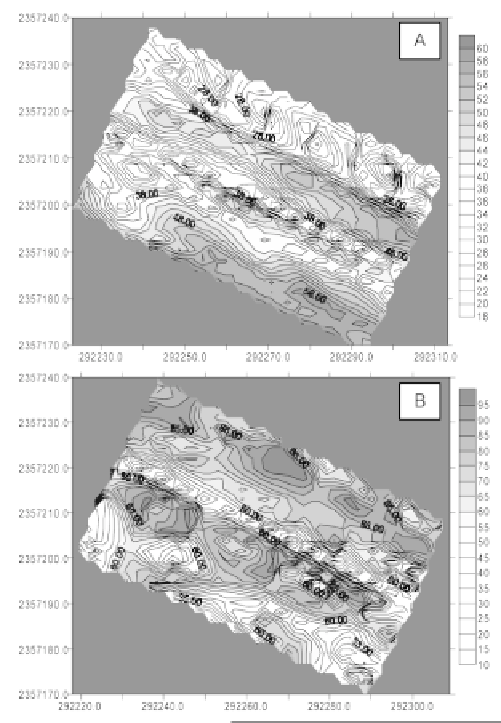Agriculture Reference
In-Depth Information
14.2.4 Consequences for the epidemiology of soil-borne diseases
The restricted dispersal of inoculum is a characteristic of soil-borne pathogens,
accounting for the patchy distribution of diseased plants at the start of epidemics.
Depending on whether these soil-borne pathogens have an aerial phase of
development in their cycle, this patchiness may be observed only in part of the annual
cycle or over several years of cultivation, with patches becoming larger before
merging (Fig. 14.1). Truscott and Gilligan (2001) described this dynamic as a two-step
process: (i) local amplification due to parasitic activity on the plants initially infected
and transmission of the disease to neighbouring plants, (ii) dispersal of inoculum by
water, wind or humans.
-
1
-
1
Figure 14.1. Yield (A, 10 t ha
maps of a 3
rd
winter wheat field, showing patchiness of the disease (Le Rheu, France, 1999;
) and take-all disease incidence (B, per 100 diseased plants)
from Lamkadmi
et al
., 2000).

